A small excerpt from Sunday's artist roundtable from the show Windows on Heaven: Contemporary Icons. I speak from 4:43 on how my sculptures relate to Icons and how taking Icon painting classes at the School of the Sacred Arts influences my work. (The sound is a bit off for the first minute or so but it gets better) It was an honor to be included in this show! Link for email subscribers: https://www.youtube.com/watch?feature=player_embedded&v=dXF3j-VyVk8
Meinrad Craighead
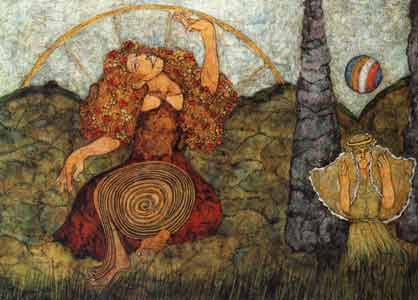
Meinrad Craighead is an amazing spiritual artist and mystic who articulates a brilliant vision of the artist's work in this world. Here is her first mystical experience:
Years before the Goddess movement got underway, artist Meinrad Craighead first encountered "God the Mother" as a child. Lying with her dog beneath blue hydrangea bushes in her grandmother's garden in North Little Rock, Arkansas, she had heard "a rush of water" deep within her. "I listened to the sound of the water inside and I understood; 'this is God.' "Thus, it is no surprise that she now lives and paints near the Rio Grande River, the watery guide she describes as the "natural, metaphysical, archetypal symbol which has ruled my life." from Soul Sisters, The Five Sacred Qualities of a Woman's Soul by Pythia Peay
Her first mystical connection to God was through the Earth. Artists have an implicit connection to the material world because it is our task to join matter and spirit in a work of art. Artists must have a fundamental respect for the raw stuff of matter and the Earth which supports and connects us. Craighead understand this fully. Here is how she describes the creative process:
As an artist, I'm the first to see the treasure which has never existed before. But the treasure is never for yourself. You are just the agent to receive it and bring it back." The creative process, she says, is endlessly regenerative.... an artist is a transformer; transformation is what our work is about. It's the work in the cauldron; you throw in anything and it all comes together as something delicious. It's like there's centrifugal force in us, and everything that comes in each day is spun around. Most is flung off, but the rich stuff drops right down to the bottom. You know what a compost heap is like; it seethes, makes noises, stinks, bubbles, and emits gasses. All of that is transformation. So when your imagination gets in there, it's growing in the most incredible, rich earth. No wonder the images come out; they've been trapped in there. The work of the spirit is in each of us. All we've got to do is just do it. That is the incarnation, that is making the invisible visible.- Meinrad Craighead
It makes you want to run out and create, right? The video below is a preview of a documentary about her life. She is amazing.I'll only touch on a couple things that struck me because there is just too much here. I love how she describes "the Divine gaze" which holds us in existence. We exist because the Divine perceives us. How validating is that? The Divine chooses us to be filled with Creative energy, to be used us as channel to transform the material world. I am also moved by her portrayal of the feminine aspect of the Divine. There is great courage in her work. She gently expands our conception of what is possible and creates more space for the Divine in this world. In our minds, the Divine is no longer just the narrow definition of "God", the Divine now has a "Goddess" face as well. God becomes as Tim Victor, a blogger I follow, says "Godde". By doing so, Craighead brings more balance into the world. Her work heals and transforms our world. She is a true artist and a true partner with the Divine Artist.
Matthew Fox Explains Eckhart and the Artist
With all the excitement of the holidays, I haven't had much time to make art. I haven't been sleeping well- a sure sign that I've abandoned my body for my head. I've been working hard on putting together my "Earth" page, which will hopefully be up by the weekend. It's taking me so long because it is endlessly fascinating. One theme that seems to run though most of the writers, that people are disconnected from their bodies and one path to true connection with God is through connection to the Earth, creation.It really is hard to maintain that connection between body and spirit in our culture. I grew up in LA, a soulless city if there ever was one! But LA had the ocean which I visited at least 3 or 4 times a week. I didn't swim or play volleyball or get tanned; I just sat and stared at the ocean. The beauty of those moments would fill me and allow me to be still. Being still allowed my mind to quiet and my spirit to enter back into my body. Contemporary life is so busy. There is no time for stillness unless that time is made either by being sick or by choice. My illness has many complex spiritual reasons, but I'm sure keeping me still is no small part of it.It took me a long time to learn to listen to the Divine. But now I understand that if I don't do it now, the Divine will force me to do it later and it will be harder. So there is really no point in fighting. Yesterday & today I've made time to be still so I can reconnect my body and spirit. Oh the resistance! But when I finally was still, I felt myself come back. I felt more present and more centered. I was connected again and I felt the Divine enter into me because I made space. In that moment everything shifted for me. You cannot connect with the Divine without experiencing change. Hildegard of Bingen calls it "greening". She says that “the word is all verdant greening, all creativity.”This place of stillness which allows change is the same place I connect with when I create art. I discovered this amazing youtube video about this exact thing. In it, Matthew Fox explains Meister Eckhart's views on artists:He said a few things that really struck me:
- 1) I copied this while he was speaking:
Eckhart compares the work of the artist with the Annunciation scene. The spirit that comes over Mary and begets the Christ in Mary. He says this is the same spirit that comes over the artist and begets the Christ. So this is the Cosmic Christ being born in you. And of course it's Eckhart who says, "What good is it if Mary gave birth to the son of God 1400 years ago and I don’t give birth to the son of God in my own person in my own work," that’s art. What you give birth to is the Christ, or the Shekinah the wisdom, or the Buddha nature. You are giving birth to it just like Mary.
He is basically saying by creating we are bringing the Divine more fully into the world. Fox is talking about the Macrocosm/microcosm, as above so below, when he talks about the artist giving birth to Jesus in their soul. The artist's work is but a pale shadow of the Creator's work, pale but significant. Just as Jesus shows us the perfection of matter, so the artist seeks to perfect matter, to infuse it with Spirit during the act of creation.2) Eckhart believed that sins of omission are greater that sins of pride. If you hide your joy, Eckhart says you are not spiritual…. Wow is that amazing. By hiding our joy, we dam up the fecund river of Divinity. We stop the Divine from entering the world. Artists are experts at hiding their work! Fox talks about art though out this video, but he does mean just painting. He means whatever is your joy, your job, caring for your family, hiking, etc.3) Fox feels that the creative nature of the Divine has been ignored in much of Christian theology, that there is too much emphasis on sin and redemption. Because we have forgotten God's creative nature, we have lost our connection to creation itself. This is, in Fox's opinion the cause of the destruction of our planet. (Interestingly, Fox doesn't believe in original sin. He believes in original creativity. I'll have a post about this interesting concept coming up.)4) Fox asks, "How can you know god the creator except by loving creation?" A poignant question.5) Jesus was an artist, a story teller.
I love most of what Fox says, but his use of the term "co-creator" makes me a little uncomfortable. As an artist, I don't feel I am a co-creator with God exactly. Certainly I am there. I show up but I feel my job is to be present but empty so that the Divine can flow through me. The term co-creator gives the impression of control. Certainly it is true that that my work reflects me and each artist's work bears their own distinct mark. The artist is like a filter through which the Divine stream flows. The more I am present in the act of creation, the more space there is for the Divine to fill. The less I control the creative process, the less I filter out of Divine presence.I recently came across the artist statement of Canadian Heidi Thompson. She describes it like this:
While painting, I become immersed in the experience of the image changing, dissolving, reappearing, solidifying, then separating again. The emerging images often have characteristics which I had never imagined. I apply transparent layers of colour trying to create illusions of atmosphere - gas, liquid, smoke, dust, steam or changing surfaces of water, corrosion, ice and chemicals. Right before my eyes, the heavy solid nature of paint and paper seem to dissolve into impressions of finer substances. These finer substances then become subtler as they stimulate my sensations and provoke my imagination. The painting inspires thoughts, impressions, memories, and feelings - all finer qualities of the mind. What was once solid matter has now transformed into mind-energy. If painting is indeed such a vehicle, which can transform matter into fine substances and, then, into even subtler mind-substances, then it may be possible for the mind-experiences to transcend into something even finer - a sense of spirituality.If I have succeeded even a small step toward my artistic goal, my paintings would show these levels of our nature - matter, energy, mind, and help the viewer feel something of his or her own spirit-soul. I know that painting aids the experience of these levels of my being. It allows me to experience how matter, energy, mind and spirit play together, guided by some invisible intelligence. And somehow, all these manifestations of existence seem to emanate from a greater intelligence - perhaps God or the Absolute. Sometimes when one of my paintings resonates a beautiful harmony and energy, I feel that a tiny part of the mystery of who I am is being unveiled and I am filled with great pleasure and love.
Art & The Physical
Making art is a physical act with physical outcomes. The crux of the problem is how to join the physical and spiritual worlds. How do we bring the sacred into physical form and why?I am deeply influenced by the ideas of early alchemists who sought to purify matter. Most people have heard of how alchemists looked for the philosopher’s stone, an elixir, which would transform base impure metals such as lead into gold. They described their quest as perfecting or healing matter. Gold, the purest metal, a symbol of the Divine on earth was not the true goal of an alchemist. Alchemists believed in the sacred principle “as above, so below” as written in the Emerald Tablet. As the alchemist purified matter externally, they believed they were making corresponding internal changes to the own souls. Their true goal was spiritual perfection & union with God.The same principle is at work when an artist creates. Artwork manifests the spiritual changes occurring within the artist as they create. All creativity is ignited from the same flame, tapped from the same eternal well. By creating, artists contact & connect with their source and that fundamentally changes them. Why do you think so many artists turn to drink and flirt with madness? This connection with our source is awesome and can be overpowering and painful. Artists don’t need pain and suffering to create, but most of us are so closed off from our Divine source that when we access it, the pain of our separation crashes down on us in a crushing blow. It’s not the pain an artist needs to create, it’s the pain that comes with the act of creation.However, if an artist or mystic continues to seek God eventually they become tempered like a sword in the fire and can bear more closeness with less pain. When the artist learns to allow the fecund stream of Divine creativity to flow through them with out expectation or control, the artwork which is created resonates with God. This artwork becomes a pivoting point from this world to the next. But the goal is not to escape the physical and return to God, it is to join the two worlds as one. Art can provide a powerful experience of the Divine in a way few other things can.Sister Wendy has a really interesting passage in her book The Mystical Now: Art and the Sacred (Thanks John for pointing it out to me!):
GK Chesterton, mourning our state as fallen creatures, ego-lovers…explained: ”We have forgotten who we and what we are.” And art, he said, ”makes us remember that we have forgotten.” This is painful. It is also our best means apart from direct contact with God, of rediscovering that interior integrity. All great art, being spiritual, both grieves over and celebrates “what we are.” It needs no religious iconography for this…(p. 9)
She goes on to say that this is why “so many people unconsciously fear and resist art.” It is not the fear of art, it is the fear of God.I think it is clear from what I have said, that artists have a responsibility for the physical nature of what they create. Elsewhere, I’ve discussed the artist’s responsibility to the Light, to choose to be a vessel for light and good in this world. But this is slightly different. Artists also have a responsibility to the material world. As the alchemists did with metals, the artist purifies matter in the act of creation. Our responsibility is nothing less than to be active participants in healing the earth. My next post will clarify this in further.
Rumi, Grey & the Responsiblities of the Light
Needs must I tear them out," the peacock cried,"
These gorgeous plumes which only tempt my pride?
"Of all his talents let the fool beware:
Mad for the bait, he never sees the snare.
Harness to fear of God thy strength and skill,
Else there's no bane so deadly as free-will.
-Rumi
The most moving thing for me in Grey's The Mission of Art is his absolute insistence that artists have a responsibility to the Light. The art we create has impact and artists must choose whether to add to the darkness in the world or to increase it's luminosity. Grey believes that an artist cannot produce works of light if they do not choose the light in their own lives and I agree. No one is perfect, but the intention to do right and be a source of good in the world counts even if we don't always succeed.Speaking to the artist Grey says:
It is your responsibility to find the ways your visions can positively influence individuals and your culture...The mere process of fixing imagery onto surfaces or forms does not ensure spiritual development. It is the intention and awareness from which artists create that determine whether their work will serve mammon, ego or spirit. (p. 218)
I love that. It is our responsibility. In our culture we have lost sight of our greater responsibilities to humanity and the Earth in favor of consumerism and greed. This reminds me of the many mystical visions recorded throughout time where the Divine gives the mystic a task to be done in the world, for example Hildegarde of Bingen. These visions have personal meaning for the mystic, but they also offer a greater message for humanity. The experience of the Divine, must not be controlled or secreted away. It is our charge to be a doorway for the Light, our source, to enter into his wold.Truly, we have no other reason than to serve the Light because this Light is really our Self anyway. Every moment we fight this reality we waste our life force and we call upon darkness. How much easier it is to surrender to our true calling, to pluck the peacock feather as Rumi says, and serve. Artists are blessed with a unique opportunity because art can reach the spirit without engaging the mind and our egos. Art can effect deep and meaningful spiritual evolution in the world.
Alex Grey
 So I started & finished Alex Grey’s The Mission of Art today. I was very impressed. He really understands art as a spiritual path and articulates well the mystical experience inherent is creation. In fact I have been completely converted to Grey’s work as an artist.
So I started & finished Alex Grey’s The Mission of Art today. I was very impressed. He really understands art as a spiritual path and articulates well the mystical experience inherent is creation. In fact I have been completely converted to Grey’s work as an artist.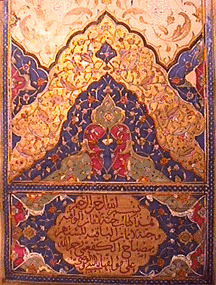 Grey’s work is so luminous it’s almost difficult for me to look at sometimes. Strangely, I’ve always considered him as part of the school of realism. His work has that quality even though he depicts the spiritual body and in his book he often references Michelangelo as inspiration. I’m not too fond of realism although I appreciate the skill needed to do it. But I’ve misjudged. Grey’s work is more like the Islamic Illuminated borders I’ve worked on (See image on left- an authentic 18th cent. Arabic illuminated page). It embodies sacred geometry. When the mind engages with sacred geometry it is elevated and expanded in a particular way. It engages us without going through the feeling body. Much of western art is about emotion and the heart. It is a more Eastern approach to spirituality to travel to God through the Divine mind. Grey’s work engages us in a mystical experience even if our emotions miss it our spiritual body does not.I must say I am wowed by the possibility Grey’s book & work present of healing and transforming humanity through art. This has always been my own desire and unspoken goal. I think it takes great courage to articulate such a lofty goal. I’ll have more posts coming up about this book once I’ve digested it a bit more…
Grey’s work is so luminous it’s almost difficult for me to look at sometimes. Strangely, I’ve always considered him as part of the school of realism. His work has that quality even though he depicts the spiritual body and in his book he often references Michelangelo as inspiration. I’m not too fond of realism although I appreciate the skill needed to do it. But I’ve misjudged. Grey’s work is more like the Islamic Illuminated borders I’ve worked on (See image on left- an authentic 18th cent. Arabic illuminated page). It embodies sacred geometry. When the mind engages with sacred geometry it is elevated and expanded in a particular way. It engages us without going through the feeling body. Much of western art is about emotion and the heart. It is a more Eastern approach to spirituality to travel to God through the Divine mind. Grey’s work engages us in a mystical experience even if our emotions miss it our spiritual body does not.I must say I am wowed by the possibility Grey’s book & work present of healing and transforming humanity through art. This has always been my own desire and unspoken goal. I think it takes great courage to articulate such a lofty goal. I’ll have more posts coming up about this book once I’ve digested it a bit more…
The Yoke of the Spiritual Artist
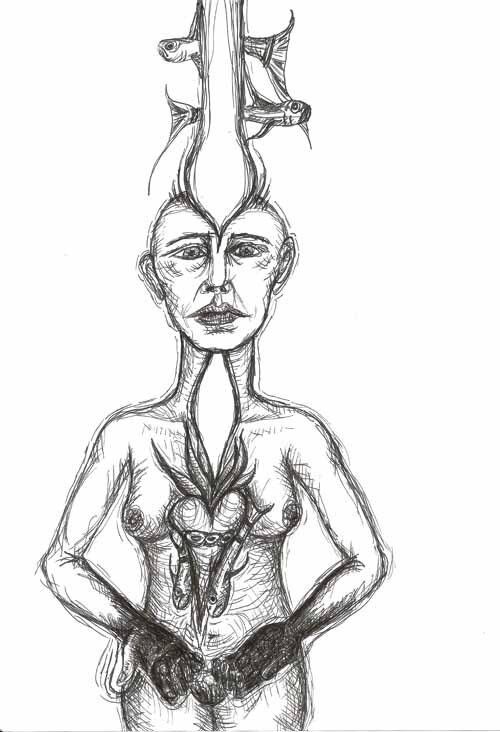


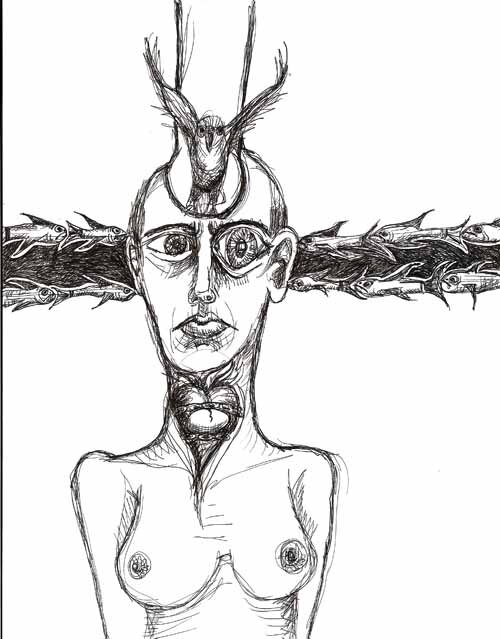
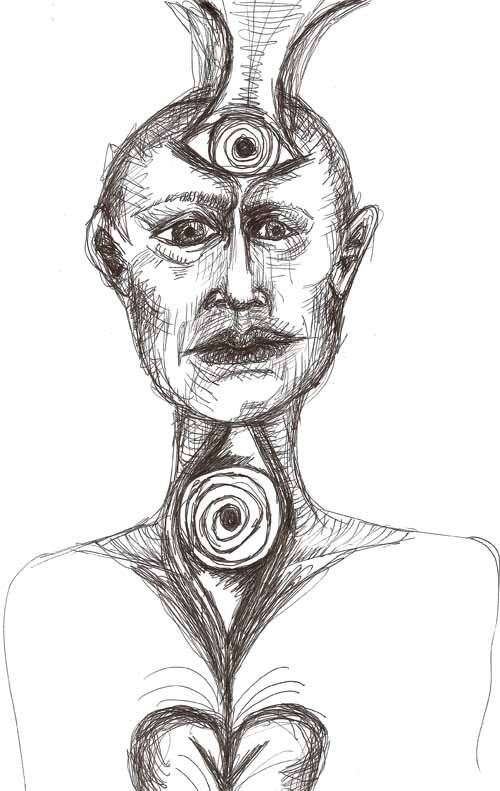
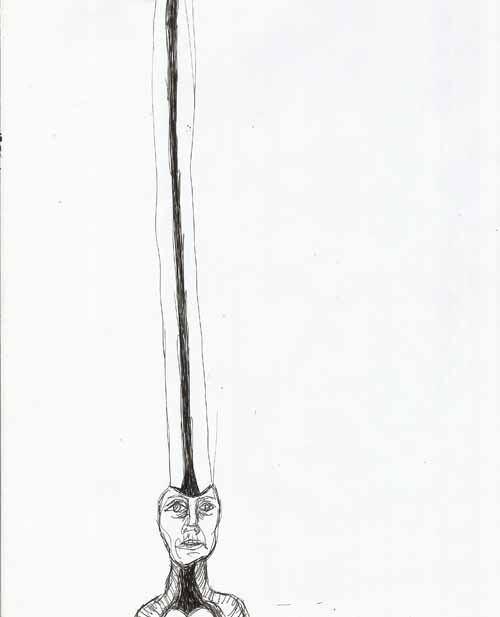
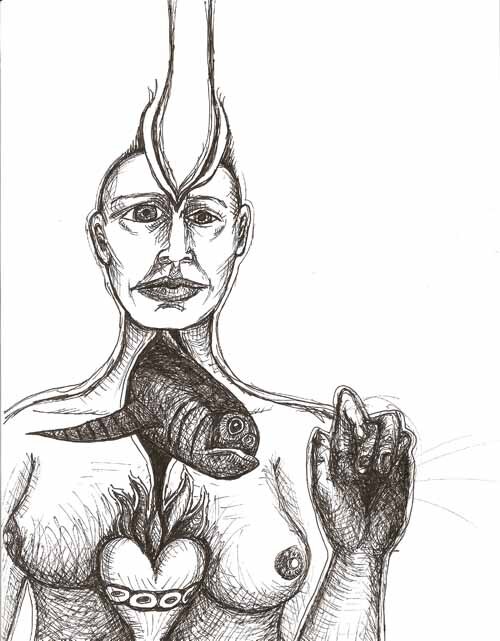
The act of creation is by its very nature an imitation of the Divine. The artist is the microcosmic reflection of the Macrocosm. Knowing this lays a beautiful yoke upon the artist forcing them to seek Light. It is a yoke that, if we knew our true Selves, would already have been accepted without question.Everything that is created in this world comes from the Divine Womb. To create the artist must access this uncreated well which gives birth to Being and Light. Therefore act of creation is itself and act of Light. To be successful as artists we have to choose Light in everything we do to secure our own creativity. This doesn’t mean the superficial avoidance of anger, pain or sadness because this avoidance is actually darkness. The Light artists must seek is found only by embracing chaos, by diving into pain and sorrow in order to emerge in the Womb. This Light is the complete surrender of self to the yoke of the Divine (and I don’t mean religion). Without this surrender God seems cruel and unforgiving; with it the Divine becomes the fecund well that nourishes the artist without ceasing.
The goal of the spiritual artist is to be the microcosm of the Creator. As written by Rabindranath Tagore about above and below:
My Song
This song of mine will wind its music around you, my child, like the fond arms of love.
This song of mine will touch your forehead like a kiss of blessing.
When you are alone it will sit by your side and whisper in your ear, when you are in a crowd it will fence you about with aloofness.
My song will be like a pair of wings to your dreams, it will transport your heart to the verge of the unknown.
It will be like the faithful star overhead when dark night is over your road.
My song will sit in the pupils of your eyes, and will carry your sight into the heart of things.
And when my voice is silent in death, my song will speak in your living heart.
(p.363)
The Divine stream of creativity which flows into this world is the milk of life. It is nourishment. Art can heal; art can transform; art can nourish and succor the world. As artists, it is our choice to make.
Reading up on Spiritual Artists

I’ve decided to expand my reading list. I'm never going to abandon the succor of the medieval mystics, but I just ordered a dozen books by and on modern & contemporary spiritual artists. The first to arrive is Alex Grey’sThe Mission of Art. Grey is an interesting artist who charts the spiritual energies of the human body in a very technical way (see image on right). His work has value and power, but much of it seems very cerebral and controlled. I don’t believe God can be controlled so I am excited to see what he has to say. I’ll report promptly, but for now, he begins his book with this amazing quote from Beethoven:
There is no loftier mission than to approach the Godhead nearer than other people, and to disseminate the divine rays among humanity.
Beethoven’s work is so clearly suffused with the Divine. However, I've always questioned the metaphor of traveling nearer to the Godhead. The early Kabbalists used this idea interestingly. They meditated on the chariot of Ezekiel to make the mystical ascent to God. I guess because I suffer from over thinking this metaphor, beautiful as it is, engages my brain too much. I would rather say removing the veils or polishing the mirror to reflect the Divine more clearly. How’s that for cheek- arguing with a genius!
The Moonlight Sonata:
Tarkovsky on Spirituality in Art
I just ran across this wonderful quote from one of my favorite filmmakers Andrey Tarkovsky on the creative blog in effigy.
Devoid of spirituality, art carries its own tragedy within it. For even to recognize the spiritual vacuum of the times in which he lives, the artist must have specific qualities of wisdom and understanding. The true artist always serves immortality, striving to immortalize the world and man within the world. Andrey Tarkovsky: Sculpting in Time
I love this. Even film making can be a spiritual discipline.
Alyce Gottesman
I love this artist. I was able to see her work this weekend at the Parkway Studio tour.Check out her website. Her work is moving. It speaks of the way energy flows and courses through the material world.
Kandinsky's Concerning the Spiritual in Art
Princess Haiku mentioned Kandinsky's book on her blog and it got me thinking. Most of what the book says has no interest for me, except this:
But to a more sensitive soul the effect of colours is deeper and intensely moving. And so we come to the second main result of looking at colours: their psychic effect. They produce a corresponding spiritual vibration, and it is only as a step towards the spiritual vibration that the elementary physical impression is of importance. (p. 24, 1977 ed.)
I have always believed this. Artwork can create spiritual changes within a viewer and these changes have little to do with a piece's imagery or visual impact. But I would go further than Kandinsky. It's not just color that holds a spiritual vibration, it is the entire physical matter of the painting that can resonate. The physical materials of artwork capture the spiritual vibration of the artist.If an artist struggle with their work, they are really confronting the blocks they have to connecting to the Divine flow, the source of all creativity. When an artist sticks with it and is present to the block for long enough, no matter how difficult or painful that might be, that block will crumble and the artist will undergo a spiritual transformation. The energy from that transformation becomes embedded in their art. This energy then has the potential to resonate with and heal others.When I was practicing the art of illumination, I discovered creating art that effects on a vibrational level can go even further. Illumination was a sacred art in the medieval period. A major component of this art was the creation of art materials. By making art materials in a peaceful meditative state artists can create works of art that literally resonate with healing energies.
